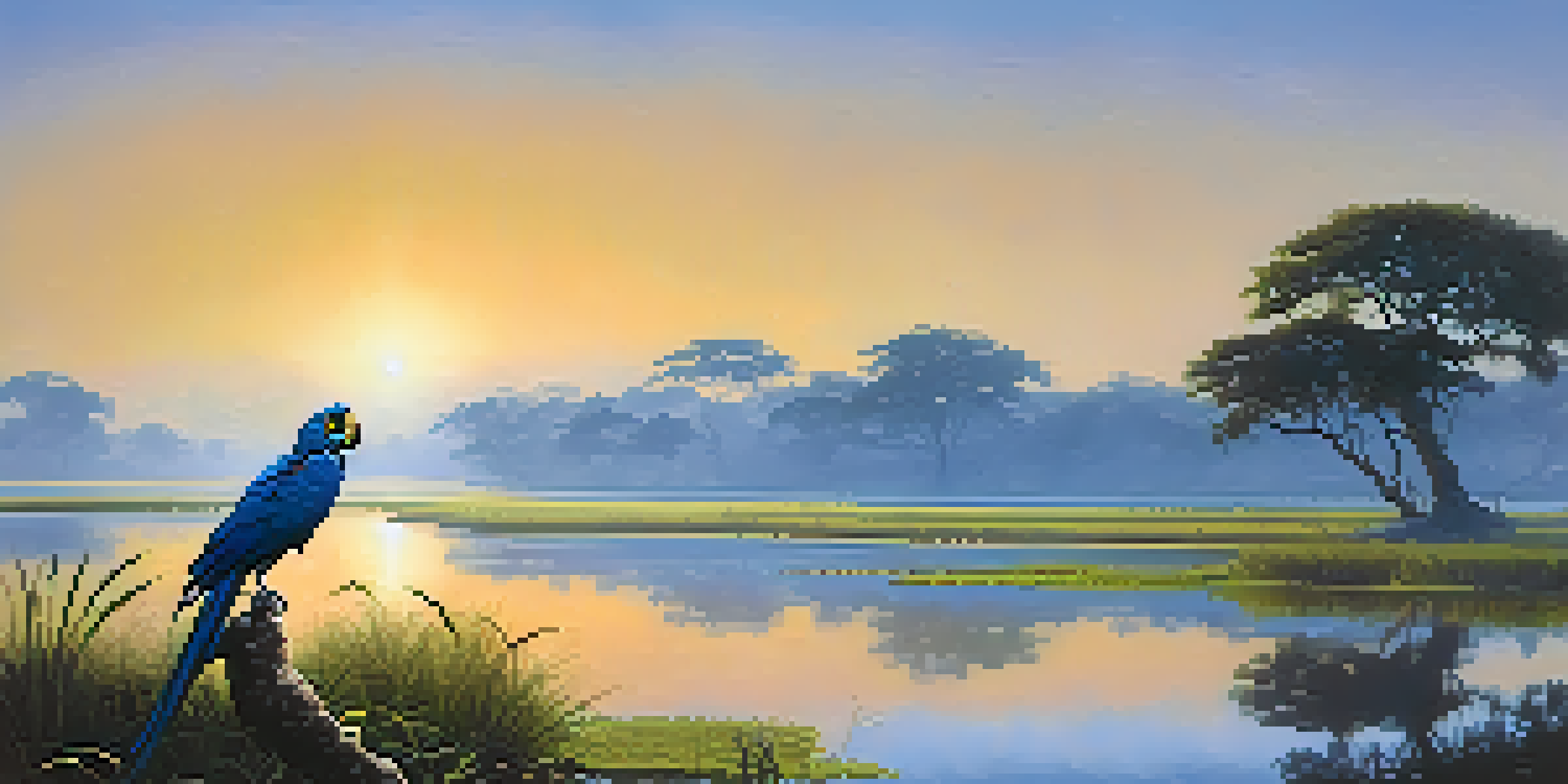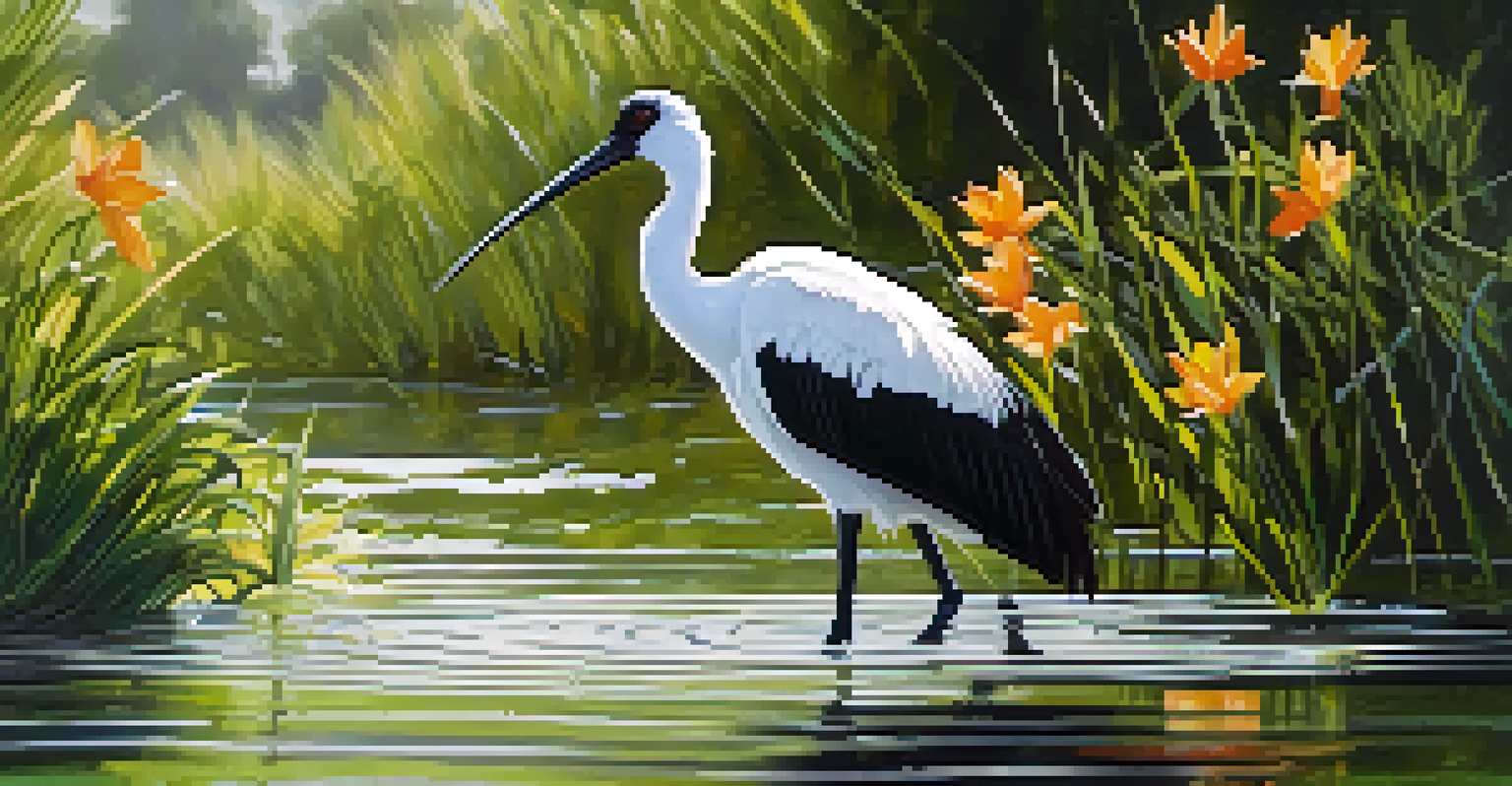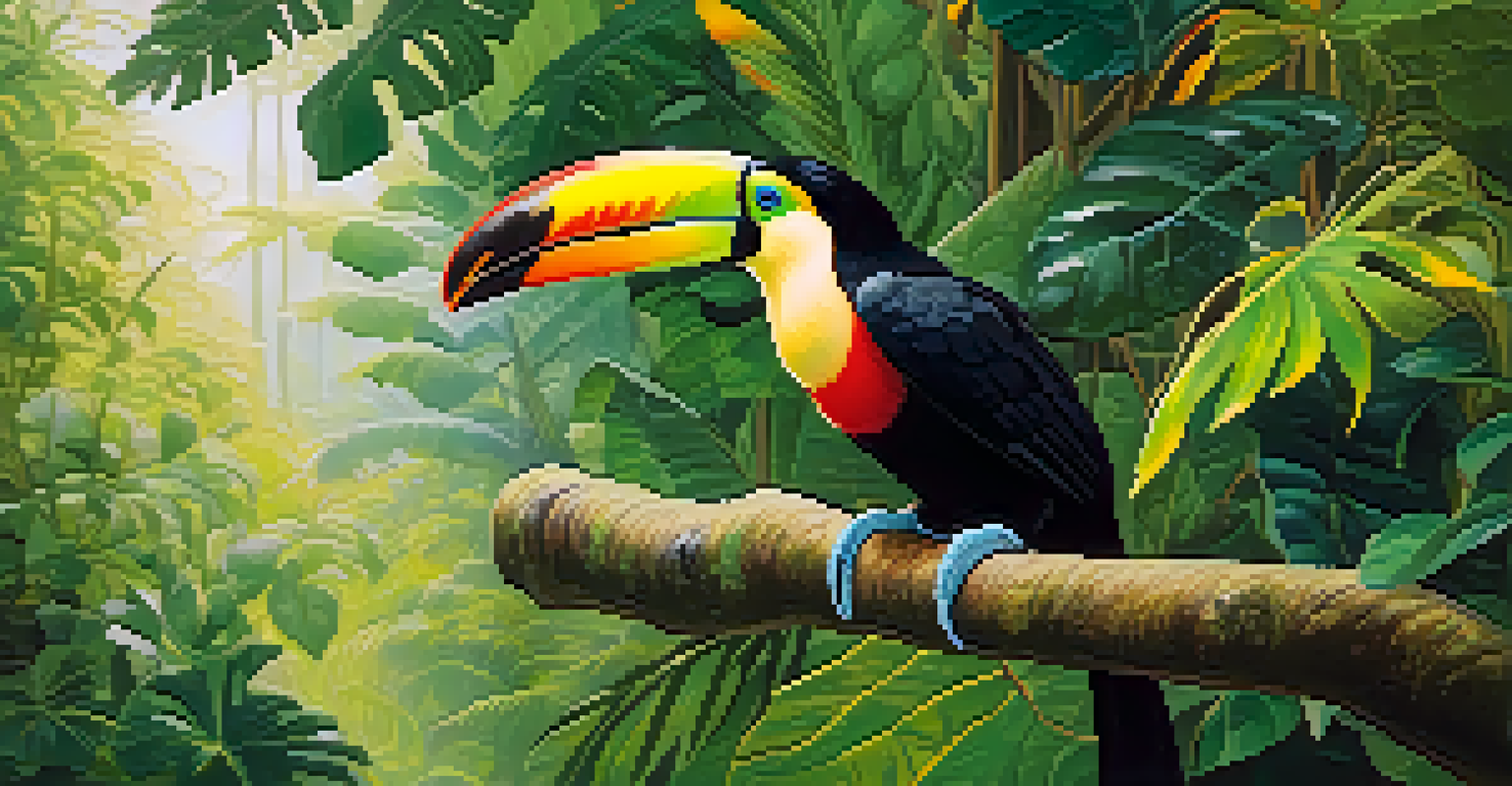Birdwatching in Pantanal: Home to Unique Avian Species

Introduction to Pantanal: A Birdwatcher's Paradise
The Pantanal is one of the largest tropical wetlands in the world, stretching across Brazil, Bolivia, and Paraguay. This unique ecosystem is a haven for birdwatchers, offering a diverse range of habitats that attract countless avian species. With its lush landscapes and abundant water sources, the Pantanal provides the perfect backdrop for observing some of the most extraordinary birds on the planet.
In every walk with nature one receives far more than he seeks.
From colorful macaws to elusive jaguars, the wildlife here is nothing short of breathtaking. The sheer variety of birds, estimated to be over 650 species, makes every trip an exciting adventure. Whether you're a seasoned birdwatcher or a casual nature lover, Pantanal has something to offer everyone.
The best time to visit is during the dry season, from May to September, when the water levels recede and birds congregate around the remaining water sources. This phenomenon makes it easier to spot various species, turning your birdwatching experience into a rewarding pursuit.
Understanding the Unique Ecosystem of Pantanal
The Pantanal is more than just a wetland; it’s a complex ecosystem teeming with life. Its unique geography includes vast floodplains, swamps, and forests, creating a rich tapestry of habitats for birds and other wildlife. This diversity not only supports a wide range of avian species but also plays a crucial role in the global ecosystem.

One of the key features of the Pantanal is its seasonal flooding, which creates a mosaic of environments. During the rainy season, the landscape transforms, allowing for different bird species to thrive. As the waters recede, birdwatchers can observe migratory species that venture into the area for breeding or feeding.
Pantanal: A Birdwatcher's Haven
The Pantanal's diverse ecosystems and over 650 bird species make it a top destination for birdwatching enthusiasts.
Understanding this delicate balance is essential for appreciating the avian diversity found here. The unique interplay between water and land shapes the lives of the birds and enhances the overall biodiversity of the region.
Highlighting Iconic Bird Species of the Pantanal
Among the many species that inhabit the Pantanal, some stand out for their beauty and uniqueness. The hyacinth macaw, the world's largest flying parrot, is a dazzling sight with its vibrant blue feathers and impressive wingspan. Spotting these magnificent birds in their natural habitat is a thrill for any birdwatcher.
Birds are indicators of the environment. If they are in trouble, we know we'll soon be in trouble.
Another notable species is the jabiru stork, the tallest bird in South America, known for its striking black and white plumage. These storks can often be seen wading in shallow waters, searching for fish and amphibians. Their towering presence adds a sense of grandeur to the wetlands.
The Pantanal is also home to the charming toucan, with its oversized colorful beak and playful personality. These birds are often seen flitting through the trees, adding splashes of color to the lush green landscape. Each bird species contributes to the rich tapestry of life in the Pantanal, making it a must-visit destination for bird enthusiasts.
Best Practices for Responsible Birdwatching
As birdwatchers, it's our responsibility to engage in practices that protect the environment we cherish. Respecting the natural habitat means keeping a safe distance from nesting sites and avoiding any disturbances to wildlife. Simple actions, like staying on marked trails, can significantly reduce our impact on the delicate ecosystems of the Pantanal.
Additionally, using binoculars instead of getting too close allows for a better viewing experience while keeping the birds comfortable in their natural habitat. It's also important to leave no trace behind, ensuring that the beauty of the Pantanal remains for future generations to enjoy.
Responsible Birdwatching Practices
Engaging in responsible birdwatching practices helps protect the delicate ecosystems of the Pantanal for future generations.
By adopting these responsible practices, birdwatchers can help protect the unique avian species and their habitats. Enjoying nature responsibly not only enriches our experiences but also contributes to the conservation efforts that are vital for the future of these incredible ecosystems.
Guided Tours: Enhancing Your Birdwatching Experience
Joining a guided birdwatching tour can significantly enhance your experience in the Pantanal. Local guides possess invaluable knowledge about the area, including the best spots to see specific bird species and insights into their behaviors. Their expertise can transform a good birdwatching trip into an unforgettable adventure.
Many tours are designed to cater to all skill levels, ensuring that both beginners and experienced birdwatchers can enjoy the experience. Guides often provide binoculars and field guides, making it easier for participants to identify various species as they explore the breathtaking landscapes.
Furthermore, these tours often include discussions on the conservation challenges faced by the Pantanal's wildlife. Engaging with local experts not only enriches your understanding but also fosters a greater appreciation for the delicate balance of nature in this unique region.
Photography Tips for Birdwatchers in Pantanal
Capturing the beauty of the Pantanal's avian residents can be a rewarding endeavor for birdwatchers. To get the best shots, it's essential to use a camera with a good zoom lens that allows you to photograph birds from a distance without disturbing them. Patience is key; waiting quietly for the perfect moment can yield stunning results.
Lighting is another important factor in bird photography. Early morning and late afternoon offer the best natural light, enhancing the colors of the birds and their surroundings. Positioning yourself to take advantage of the golden hour can dramatically improve your photos.
Guided Tours Enhance Experience
Joining guided birdwatching tours provides valuable insights and improves the overall experience in the stunning Pantanal.
Additionally, studying the behaviors of the birds can help you anticipate their movements, allowing you to capture them in action. By blending photography with birdwatching, you can create lasting memories of your adventures in the Pantanal.
Concluding Thoughts: The Magic of Birdwatching in Pantanal
Birdwatching in the Pantanal is not just about spotting unique species; it's about connecting with nature in a profound way. The sights and sounds of the wetlands create an immersive experience, allowing you to appreciate the beauty and complexity of the avian world. Each visit unveils new treasures and stories waiting to be discovered.
As you embark on your birdwatching journey, remember to embrace the tranquility of the environment. Take the time to soak in the scenery, and allow yourself to be captivated by the vibrant life that surrounds you. This connection with nature can be both rejuvenating and inspiring.

In the end, the Pantanal offers much more than just a birdwatching destination; it provides a unique opportunity to witness the delicate balance of life. By exploring this incredible region, you'll not only enhance your birdwatching skills but also contribute to the preservation of its remarkable biodiversity.